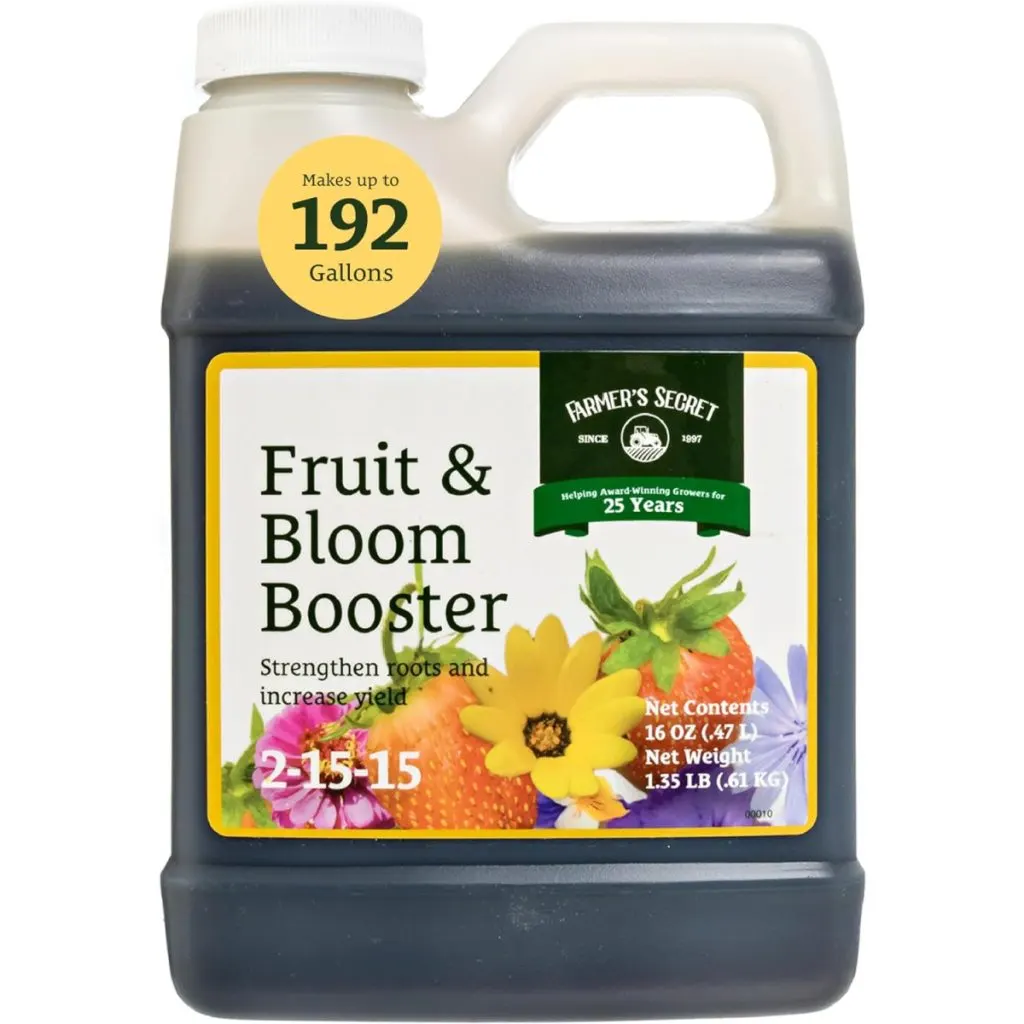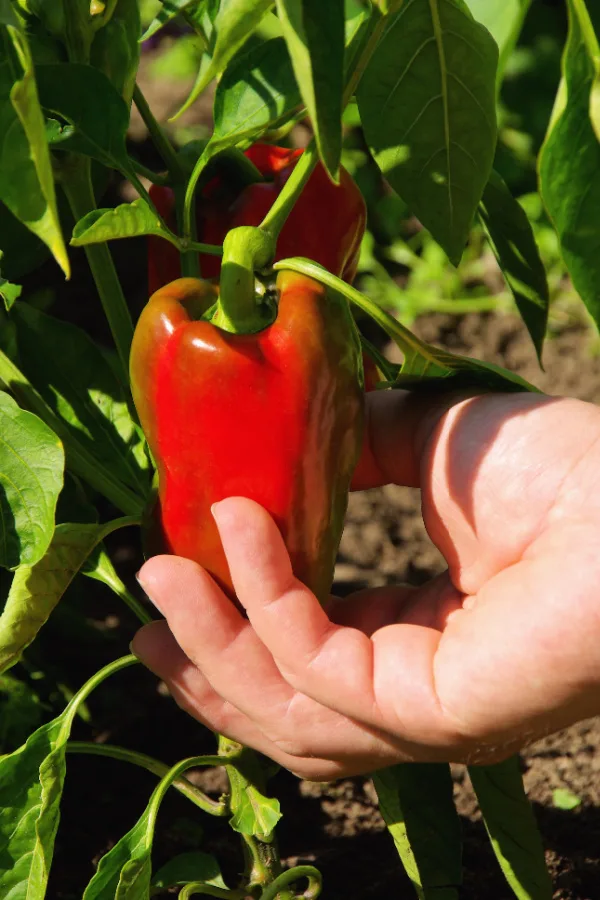When it comes to knowing the best time to pick vegetables in the garden – there is little doubt that trying to figure out how to know when to pick your peppers is one of the most difficult of all!
Whether it’s knowing if a green pepper has reached the right stage of “green” – or waiting for what seems like an eternity for peppers to turn red, orange, yellow – or even purple – trying to determine when it’s best to pluck a pepper from your plants can be quite the challenge.
It’s certainly easy to see why there is so much confusion when it comes to harvesting peppers. Peppers grow and mature much later than most summer crops. And they also seem to take forever to turn to their final color.

But believe it or not, knowing when to pick your peppers doesn’t have to be so difficult. In fact, as you will see below, armed with a few key tips, you can pick your peppers like a pro this year. And in the process, help your pepper plants produce more peppers than ever!
How To Know When To Pick Peppers – The Secret To Success!
Although pepper plants and tomato plants are both members of the nightshade family, there are a lot of differences when it comes to harvesting peppers versus tomatoes. And the biggest of those is how the two ripen off of the plant as opposed to on the plant.
With tomatoes, it’s far better to pick them as soon as they start to turn. This allows them to ripen far better and with much less problems from cracking, rotting and insects. See our article: How To Ripen Tomatoes Off The Vine – And Why It’s Better Than Leaving Them On!
Peppers on the other hand are better left to ripen on the plant. It’s not that peppers won’t ripen and mature off of the plant. However, they do so at a far slower rate. And even more, certainly not as efficiently as tomatoes. They are also far less likely to ripen enough off of the plant to turn color without giving them special lighting and temperature controls.
But whether you are growing green, yellow or red bell peppers, or any variety of sweet or hot peppers, it is first important to realize that peppers will take much longer to start producing ripe fruit than your other vegetables.
Many first-time gardeners worry their peppers are not ripening correctly compared to their tomato crop. But it simply takes longer for the majority of peppers to ripen fully and turn color. But that doesn’t mean you have to wait forever to at least taste them.
In fact, as you will see below, picking a portion of your peppers early can have a long list of benefits – for you, and your plants!
Picking Pepper Early – How To Know When To Pick Peppers
The good news is that you can pick and eat most peppers as delicious young green peppers at any point. Even when it comes to hot varieties – or the sweet red, yellow and orange bell types as well. Not only will it give you an early taste, it actually will help your plants produce better – both in how they ripen and how many peppers they produce.
The first peppers a plant produces take a lot of energy from the plant. Because of this, they also take much longer to ripen. But by removing some, you actually can help the plant kick-start better production and ripening.
Here is a great rule of thumb when it comes to picking nearly any variety of pepper from a plant: As soon as a pepper plant starts to produce peppers near what should be their full size, pick at least a quarter of them to consume as green peppers.

Not only will it allow you an early harvest, but more importantly, it will force the plant into ripening the remainder of the peppers – and to produce even more blooms for more peppers. One thing is for sure, in the long run, it also helps help the plant to ripen peppers more efficiently.
It’s important to note that when picking “green”, almost all will have a mild, green bell flavor. Hot peppers won’t be as hot. Sweet peppers won’t be as sweet. But by picking early, you will get your plant producing more than ever.
How To Know When Peppers Are Ripe
So how do you actually know when a pepper is ripe? The best way to tell ripeness is by size and color. Of course, you must first know what the typical size and color of your pepper should be.
For instance, cayenne peppers will usually be 4 to 6 inches and red when ripe. Green bell peppers should be 3 to 5 inches in diameter and a deep green color. Jalapeno peppers should be 3 to 5 inches long and a deep dark green.
From there, it’s all about timing. If you are trying to ripen your peppers to perfection on the plant, you should wait until they turn to the appropriate color and “normal” size and then pick them immediately. Harvest when the skin is tight and has no wrinkles or aging. This will be at its crispest point.
Don’t Let Your Plants Suffer From Pepper Overload – How To Know When To Pick Peppers
As the growing season rolls into mid to late August, you will notice your pepper plants producing and turning peppers at a faster rate. This is the time to leave a fair amount to ripen fully to their mature color.
In addition, as your plant starts to produce a lot of peppers, harvest the ripe off regularly to keep the plant from having too many peppers hanging at once.
The problem with leaving too many peppers on a plant to mature is that just as with tomatoes and other vegetable plants, pepper plants can quickly suffer from fruit overload. This occurs when a plant is trying to ripen too many peppers at once.
When this happens, it sends a signal to the plant to stop producing new blooms. At this point, it will just stop production in favor or ripening the large amount of peppers hanging. Keeping your plants picked also helps them from toppling over from too much weight.
Remember, more than anything else, pick often. And whatever you do, don’t stop feeding your pepper plants! Supplying them with a bloom booster fertilizer ever few weeks is vital in getting them to produce more blooms and more peppers. Affiliate Product Link: Liquid Bloom Booster Fertilizer

How To Store Your Harvest – When To Pick Peppers & How To Know They Are Ripe
So what is the best thing to do with all of those peppers you are picking? And how can you keep them at their freshest possible state?
If you are trying to ripen your peppers off of the plant, store them in a cool, less humid area. Also, make sure they are out of direct sunlight. Placing them on a bread rack or drying rack is best as it will allow air flow all around the pepper.
If you will be canning or preserving your peppers, the faster you process after picking, the better. Just as with nearly all vegetables, peppers begin to lose their crispness and flavor with each passing day.
With that said, peppers, unlike tomatoes, can successfully be stored in the refrigerator for one to two weeks with little loss of flavor or nutrients. For best results, keep them in your crisper drawer as it will keep the proper humidity for longer storage.
Here is to knowing when to pick your peppers this year – and to your biggest and best pepper harvest ever! Happy Gardening – Jim and Mary
Old World Garden
Jim and Mary Competti have been writing gardening, DIY and recipe articles and books for over 15 years from their 46 acre Ohio farm. The two are frequent speakers on all things gardening and love to travel in their spare time.
As always, feel free to email us at thefarm@owgarden.com with comments, questions, or to simply say hello! You can sign up for our free email list in the subscribe now box in the middle of this article. Follow us on Facebook here : OWG Facebook. This article may contain affiliate links.


